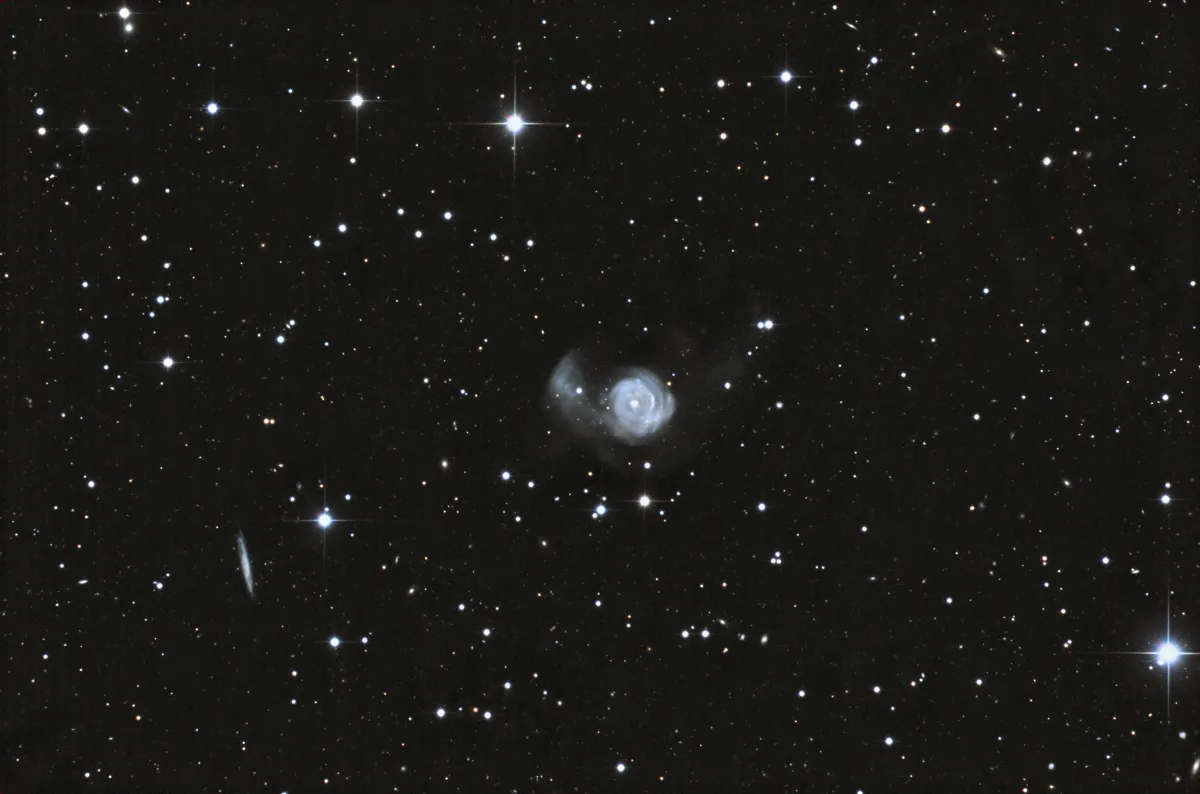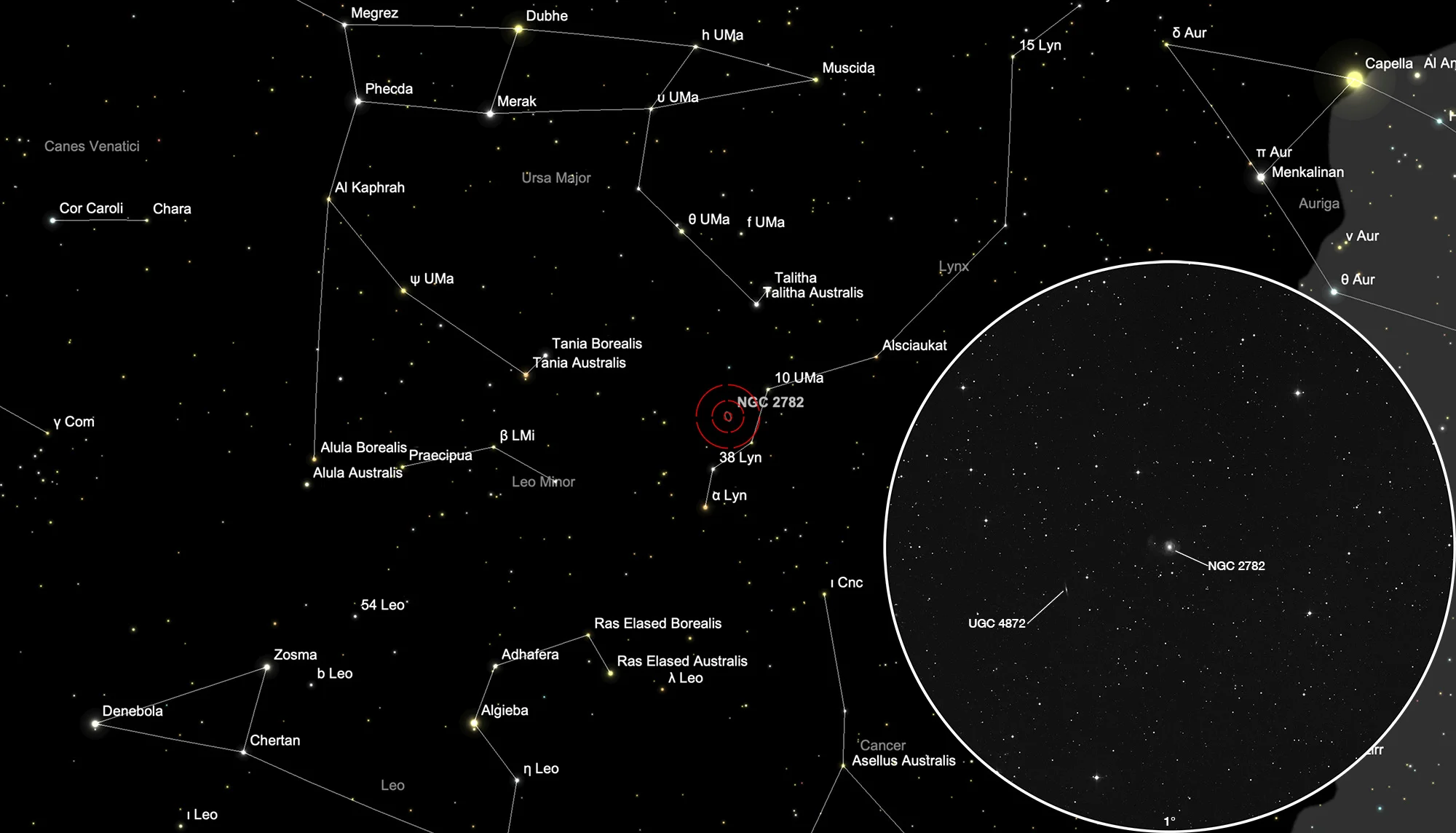Galaxy NGC 2782 (Arp 215)

History
On 18 March 1787 the German-British astronomer William Herschel pointed his large 18.7 inch reflective telescope to the sky and saw a bright nebula drifting by, which he cataloged as I 167 and described as «considerably bright, round, bright nucleus, 1.5' diameter». [464] His son John included it in his 1864 «Catalogue of Nebulae and Clusters of Stars» as GC 1778. [467] Dreyer included it as NGC 2782. [313]
In Halton Arp's 1966 «Atlas of Peculiar Galaxies», the galaxy NGC 2782 is listed as Arp 215. He noted: «Diffuse outer arms.» [199]
Physical Properties
NGC 2782 is a Seyfert 2 Galaxy of morphological type S_AB. The peculiar shape is due to a merger with a smaller galaxy of about a quarter of the mass. It is estimated that this took place about 200 million years ago. This merger produced two tidal arms rich in H-I. [519] With a redshift of z=0.008503 the estimated distances range from 38.6 to 41.7 Mpc. The small edge-on galaxy UGC 4872 shows a redshift of z=0.02744 and is 119 Mpc. It is much further away. [145]
Finder Chart
The galaxy NGC 2782 is located in constellation Lynx. The best time for observation is October to July, when it is high in the sky during night.
Visual Observation
762 mm Aperture: The circular mother galaxy is named NGC 2782. It shows up with a somewhat washed out but still star point shaped core. To the right of the adjacent star, a hint of nothingness or a tidal arm can be perceived briefly only indirectly a few times. — 30" SlipStream-Dobson f/3.3, Hasliberg, 14. 2. 2023, Eduard von Bergen
